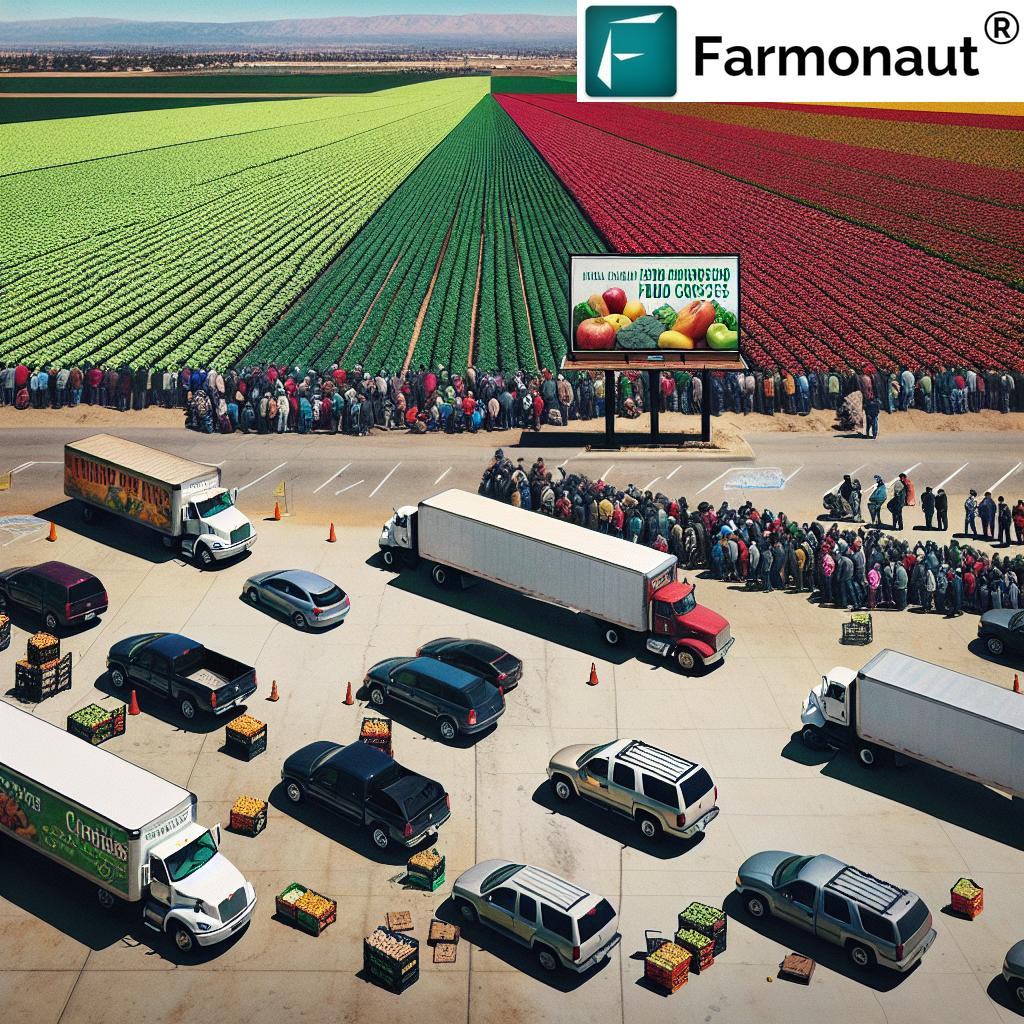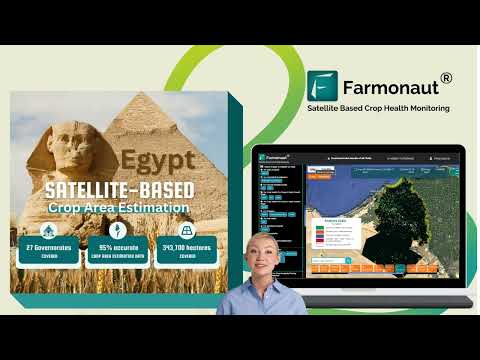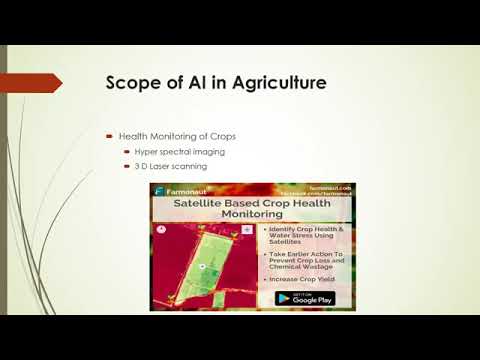USDA Funding Cuts Threaten Bakersfield’s Food Security: Local Food Banks and Farmers Face Crisis
“Despite being one of America’s top agricultural counties, Bakersfield faces high rates of food insecurity affecting thousands of residents.“
In a troubling turn of events, Bakersfield, California, finds itself at the epicenter of a growing food security crisis. Despite its status as one of America’s top agricultural producing counties, the community is grappling with the harsh realities of food bank funding cuts and USDA program reductions. These cuts are causing significant challenges for local food assistance efforts, leaving many residents struggling to put food on their tables.
As we delve into this pressing issue, we’ll explore the consequences of these funding reductions on food banks, their ability to serve the community, and the broader implications for food insecurity in agricultural regions. We’ll also examine how these changes are reshaping local food assistance efforts and their impact on vulnerable populations.
The Irony of Food Insecurity in an Agricultural Powerhouse
Kern County, home to Bakersfield, stands as a testament to America’s agricultural prowess. Yet, the stark contrast between its bountiful fields and the empty plates of many of its residents is both striking and deeply concerning. Kelly Lowery, program administrator at the Community Action Partnership of Kern (CAPK) Food Bank, aptly summarizes this paradox:
“It does not make any sense that you have Kern County, which is one of the top 2 [agriculture] producing counties in America, and yet here we have one of the highest rates of food insecurity.”
This incongruity highlights a fundamental issue in our food distribution system and underscores the critical role that food banks and assistance programs play in bridging the gap between abundance and need.

The Impact of USDA Funding Cuts
The recent cuts to USDA programs have dealt a severe blow to the CAPK Food Bank’s operations. Nearly half of the 22 million pounds of food delivered by the food bank last year came from a program recently cut under the Trump administration. This reduction in funding has led to the cancellation of 13 scheduled USDA deliveries this year alone.
In 2024, the Temporary Emergency Food Assistance Program (TEFAP) Commodity Credit Corporation (CCC) provided Kern County with 3.5 million pounds of food, valued at over $4.7 million. However, with the current cuts, the amount of food delivered to cities across Kern County is expected to be significantly less than last year.
“USDA funding cuts have reduced TEFAP, impacting the delivery of essential foods like eggs, milk, and cheese to families in need.“
Essential Foods at Risk
The funding cuts threaten the availability of crucial food items that form the backbone of a nutritious diet. Lowery expresses concern over the potential shortage of these essential foods:
“Eggs and milk and cheese and frozen proteins like chicken and turkey and pork. You know, really substantial things for Kern County families.”
These items are not just food; they are lifelines for many families struggling to make ends meet. The potential loss of these nutritious options could have far-reaching consequences on the health and well-being of the community.
The Ripple Effect on Local Farmers and the Economy
The impact of these cuts extends beyond the immediate food security concerns. Another program affected by the cuts is the Local Food Purchase Assistance Cooperative Agreement Program (LFPA). This program provided funding to food banks to purchase from local farmers, creating a symbiotic relationship that benefited both the community and the local agricultural sector.
Lowery highlights the double-edged sword of this particular cut:
“We are not going to be able to continue purchasing from local farmers with that funding, so it not only affects the amount of food that we have available to provide to food insecure folks, but it actually affects our local economy as well.”
This reduction in local farmer support programs creates a ripple effect on the community’s economy, potentially leading to job losses and reduced income for agricultural workers.
The Rising Cost of Groceries
Compounding the issue of reduced food assistance is the soaring cost of groceries in Kern County. Local residents are feeling the pinch, with many struggling to afford basic necessities. Carol Bailey, a Kern County resident, shares her frustration:
“The prices for everything at the grocery store are way too high for the average person.”
This sentiment is echoed by Gabriel Cardenas Arias, who highlights the particular challenge faced by senior citizens:
“A lot! I mean, a lot. Everything has changed. It is hard. It is hard for senior citizens.”
The combination of reduced food assistance and increased grocery prices creates a perfect storm of food insecurity, particularly affecting vulnerable populations such as seniors and low-income families.
The Scope of the Crisis
The impact of these cuts will be felt across all segments of the community. Lowery paints a grim picture of the situation:
“The cuts that are going to be made are going to be felt by, unfortunately, every segment of our community. Low-income individuals, the food insecure, farmworker communities, anybody that relies on the resources that we provide at the food bank.”
While the number of delivery locations will remain unchanged, the volume of food delivered may be significantly reduced. This means that while the food bank will continue to reach the same number of communities, each location will receive less food, potentially leaving many families without adequate nutrition.
The Role of Technology in Addressing Food Insecurity
In the face of these challenges, innovative solutions are needed to address food insecurity and support local farmers. One such solution comes from Farmonaut, a pioneering agricultural technology company that offers advanced, satellite-based farm management solutions.
Farmonaut’s platform provides valuable services such as real-time crop health monitoring, AI-based advisory systems, and resource management tools. These technologies can help farmers optimize their yields, reduce waste, and potentially lower production costs, which could contribute to more affordable food prices in the long run.
Satellite-Based Crop Health Monitoring
Farmonaut’s satellite-based crop health monitoring system uses multispectral satellite images to provide farmers with insights into vegetation health, soil moisture levels, and other critical metrics. This data helps farmers make informed decisions about irrigation, fertilizer usage, and pest management, ultimately optimizing crop yields and reducing resource wastage.
By improving crop yields and reducing waste, this technology could potentially help increase the overall food supply, which might help alleviate some of the pressure on food banks and assistance programs.
AI-Driven Farm Advisory
The Jeevn AI Advisory System, an AI-driven personalized farm advisory tool, delivers real-time insights, weather forecasts, and expert crop management strategies to farmers. By analyzing satellite data and other inputs, Jeevn AI generates customized advice, improving farm productivity and efficiency.
This technology could be particularly beneficial for local farmers affected by the cuts to support programs. By optimizing their operations, farmers might be able to produce more food at lower costs, potentially making it easier for food banks to source local produce even with reduced funding.
Blockchain-Based Product Traceability
Farmonaut’s blockchain-based traceability solution ensures transparency in supply chains, particularly for corporate clients in agriculture and related sectors. By offering verifiable data on product origin and journey, the system helps build consumer trust.
While this technology might not directly address the immediate food security crisis, it could help create a more transparent and efficient food supply chain in the long term. This could potentially lead to cost savings that could be passed on to consumers or used to support food assistance programs.
The Importance of Sustainable Agriculture
In light of the current crisis, the importance of sustainable agriculture practices cannot be overstated. Farmonaut’s carbon footprinting feature allows agribusinesses to monitor and reduce their environmental impact. This tool provides real-time data on emissions, enabling businesses to take steps towards sustainability and compliance with environmental regulations.
By promoting sustainable farming practices, we can work towards a more resilient food system that is better equipped to handle economic shocks and funding cuts. Sustainable agriculture can lead to more consistent yields, reduced input costs, and potentially more affordable food prices in the long term.
The Need for Comprehensive Solutions
While technological innovations can play a crucial role in addressing food insecurity, they are not a silver bullet. Comprehensive solutions that address the root causes of food insecurity are needed. This includes:
- Advocating for the restoration of USDA funding for food assistance programs
- Supporting local farmers through targeted assistance programs
- Developing community-based initiatives to address food insecurity
- Promoting education on nutrition and sustainable food practices
- Encouraging partnerships between food banks, local farmers, and technology providers
By combining technological innovation with policy changes and community action, we can work towards a more food-secure future for Bakersfield and other communities facing similar challenges.
The Role of Community Support
In these challenging times, community support becomes more crucial than ever. Local residents, businesses, and organizations can play a vital role in mitigating the impact of these funding cuts. Here are some ways the community can help:
- Donate to local food banks: Financial donations can help food banks purchase essential items that are no longer provided through USDA programs.
- Volunteer at food distribution centers: With reduced funding, food banks may need more volunteers to help with food distribution.
- Organize food drives: Community-organized food drives can help supplement the reduced supplies at food banks.
- Support local farmers: Buying directly from local farmers can help offset the loss of income from reduced food bank purchases.
- Advocate for policy changes: Engaging with local and national representatives to advocate for the restoration of funding for food assistance programs.
By coming together as a community, we can help bridge the gap created by these funding cuts and ensure that no one in Bakersfield goes hungry.
The Impact on Vulnerable Populations
While the funding cuts affect the entire community, certain groups are particularly vulnerable to food insecurity. These include:
- Senior citizens on fixed incomes
- Low-income families
- Farmworkers
- Children in food-insecure households
- Individuals with disabilities
For these groups, the reduction in food assistance could have severe consequences, potentially leading to malnutrition, increased health problems, and further economic hardship. It’s crucial that any solutions developed to address this crisis pay particular attention to these vulnerable populations.
The Potential Long-Term Consequences
If left unaddressed, the current food security crisis could have far-reaching consequences for Bakersfield and Kern County. Some potential long-term impacts include:
- Increased rates of chronic diseases due to poor nutrition
- Lower educational outcomes for children in food-insecure households
- Reduced economic productivity due to health issues and malnutrition
- Increased strain on local healthcare systems
- Potential increase in crime rates as people struggle to meet basic needs
These potential consequences underscore the urgency of addressing this crisis and highlight the need for both immediate action and long-term, sustainable solutions.
The Role of Technology in Agriculture and Food Security
As we grapple with these challenges, it’s important to consider how technology can play a role in improving food security and supporting local agriculture. Farmonaut’s suite of tools offers several potential benefits:
- Improved Crop Yields: By using satellite-based crop health monitoring and AI-driven advisory systems, farmers can optimize their practices to improve yields. This could potentially increase the overall food supply and help keep prices down.
- Resource Optimization: Farmonaut’s tools can help farmers use resources more efficiently, potentially reducing production costs. These savings could be passed on to consumers or used to support food assistance programs.
- Sustainable Farming Practices: The carbon footprinting feature promotes sustainable agriculture, which is crucial for long-term food security.
- Improved Supply Chain Management: The blockchain-based traceability solution could help create more efficient and transparent food supply chains, potentially reducing costs and improving food safety.
While these technological solutions can’t directly replace the lost USDA funding, they can help create a more resilient and efficient agricultural system that is better equipped to handle future challenges.
A Call to Action
The food security crisis in Bakersfield is a complex issue that requires a multifaceted approach. Here are some key actions that various stakeholders can take:
- Policymakers: Reconsider the funding cuts to USDA programs and explore ways to support local food assistance efforts.
- Local Government: Develop and implement local policies to support food banks and promote food security.
- Food Banks: Explore partnerships with local farmers and technology providers to optimize operations and stretch limited resources.
- Farmers: Consider adopting technologies like those offered by Farmonaut to improve efficiency and sustainability.
- Community Members: Support local food banks through donations and volunteering, and advocate for policies that promote food security.
By working together and leveraging both community support and technological innovation, we can hope to mitigate the impact of these funding cuts and work towards a more food-secure future for Bakersfield.
Conclusion
The USDA funding cuts have created a significant challenge for Bakersfield’s food security, threatening the well-being of thousands of residents in one of America’s top agricultural counties. This crisis highlights the complex interplay between government policy, local agriculture, community support, and technological innovation in ensuring food security.
While the situation is dire, there is hope. By leveraging community support, advocating for policy changes, and embracing technological solutions like those offered by Farmonaut, we can work towards a more resilient and food-secure future. It will take a concerted effort from all sectors of society, but with dedication and innovation, we can ensure that no one in Bakersfield goes hungry.
As we move forward, let’s remember that food security is not just about having enough to eat—it’s about ensuring that all members of our community have access to nutritious, affordable food. By addressing this crisis, we’re not just filling empty plates; we’re investing in the health, well-being, and future of our entire community.
Impact of USDA Funding Cuts on Bakersfield Food Security
Aspect Before Funding Cuts After Funding Cuts TEFAP Food Distribution (lbs/month) 291,667 Estimated 145,833 Number of Families Served 200,000 Estimated 100,000 Local Farmer Support ($) $4,700,000 $0 Food Bank Budget ($) Estimated $10,000,000 Estimated $5,300,000 Average Grocery Costs for Seniors ($/week) Estimated $75 Estimated $100 FAQ Section
Q: How have the USDA funding cuts affected Bakersfield’s food banks?
A: The funding cuts have significantly reduced the amount of food available for distribution. The CAPK Food Bank has had to cancel 13 scheduled USDA deliveries this year, and the volume of food delivered to cities across Kern County is expected to be much less than last year.
Q: What specific foods are at risk due to these cuts?
A: Essential foods like eggs, milk, cheese, and frozen proteins such as chicken, turkey, and pork are at risk. These are crucial items that provide substantial nutrition to Kern County families.
Q: How are local farmers affected by these cuts?
A: Local farmers are impacted by the cuts to programs like the Local Food Purchase Assistance Cooperative Agreement Program (LFPA). This program provided funding for food banks to purchase from local farmers. Without this funding, local farmers lose a significant customer, affecting both their income and the local economy.
Q: What can community members do to help?
A: Community members can help by donating to local food banks, volunteering at food distribution centers, organizing food drives, supporting local farmers by buying directly from them, and advocating for policy changes to restore funding for food assistance programs.
Q: Are there any technological solutions that can help address this crisis?
A: Yes, companies like Farmonaut offer technological solutions that can help improve agricultural efficiency and sustainability. While these can’t directly replace lost funding, they can help create a more resilient food system in the long term.
Farmonaut Subscriptions
Earn With Farmonaut
Earn 20% recurring commission with Farmonaut’s affiliate program by sharing your promo code and helping farmers save 10%. Onboard 10 Elite farmers monthly to earn a minimum of $148,000 annually—start now and grow your income!
Learn more about our affiliate program
Access Farmonaut’s Solutions
For developers interested in integrating Farmonaut’s satellite and weather data into their own systems, check out our API and API Developer Docs.








